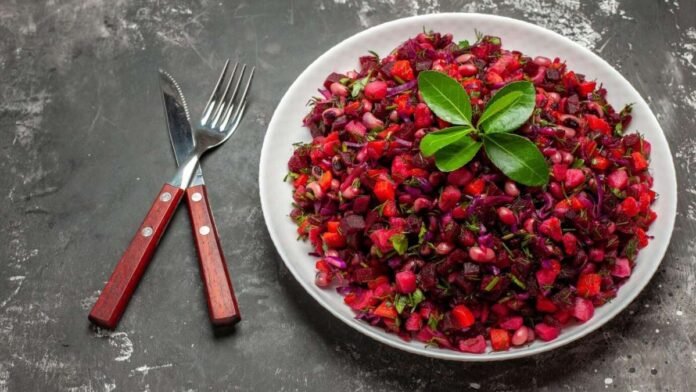Hemoglobin, a protein in red blood cells, plays a crucial role in oxygen transport. Low levels can indicate anemia or liver or kidney disease. To maintain high hemoglobin levels, consume iron-rich foods…
Red blood cells contain hemoglobin. Blood cells transport oxygen. Low hemoglobin levels can impair bodily function. Low levels imply liver or renal problems or anemia. You may have weariness, weakness, jaundice, or frequent headaches from hemoglobin shortage. Iron-rich diets boost hemoglobin.
Low hemoglobin can be caused by diet deficit of iron and vitamin B-12, blood cancer, kidney or liver disease, thyroid, thalassemia, lung disease, etc. You may feel the following.
Symptoms
Heart palpitations
Gum bleeding and skin yellowing
Constant fatigue and weakness
Weak muscles
Tired, constant headache
Shortness of breathThis list of foods helps maintain hemoglobin levels naturally.
Iron, magnesium, copper, phosphorus, B1, B2, B6, B12, and C are abundant in beetroot. This miracle veggie boosts hemoglobin and red blood cell production. It can be eaten as salad, drink, or veggies.
Seepage: Drumstick leaves contain zinc, iron, copper, magnesium, and vitamins A, B, and C. Red blood cells, hemoglobin, and iron require these components. These leaves are said to be more beneficial with jaggery. In addition, the doctor may recommend drinking its juice or making veggies from its pods.
Iron-rich greens include spinach, mustard greens, celery, and broccoli. Spinach should be cooked since raw leaves contain oxalic acid, which prevents iron absorption. Vitamin B12, folic acid, and other nutrients boost hemoglobin.
Broccoli: This cabbage-family vegetable is rich in iron, folic acid, magnesium, vitamins A and C, and other minerals. Boiling, salad, or vegetable consumption increases iron and hemoglobin levels.
Protein, carbs, fiber, calcium, and iron are included in pomegranate. Its nutrients boost hemoglobin and keep you healthy. Drink pomegranate juice everyday to boost iron and hemoglobin.Conclusion
Red blood cells transport oxygen via hemoglobin. Fatigue, weakness, jaundice, and headaches can result from low hemoglobin. Iron-rich diets boost hemoglobin.Blood cancer, kidney or liver illness, thyroid, thalassemia, lung difficulties, and dietary iron and vitamin B-12 deficiency reduce hemoglobin.
Low hemoglobin causes heart palpitations, yellow complexion, bleeding gums, weariness, muscle weakness, fatigue-related headaches, and shortness of breath. Beetroot, seepage, spinach, mustard greens, celery, and broccoli, rich in iron, B12, folic acid, and other minerals, can maintain hemoglobin levels.
The cabbage family vegetable broccoli has iron, folic acid, magnesium, vitamins A and C, and minerals. Cut, boiled, or eaten as a vegetable. Protein, carbohydrates, fiber, calcium, and iron in pomegranates improve hemoglobin and keep you healthy. Daily pomegranate juice consumption boosts iron and hemoglobin.



